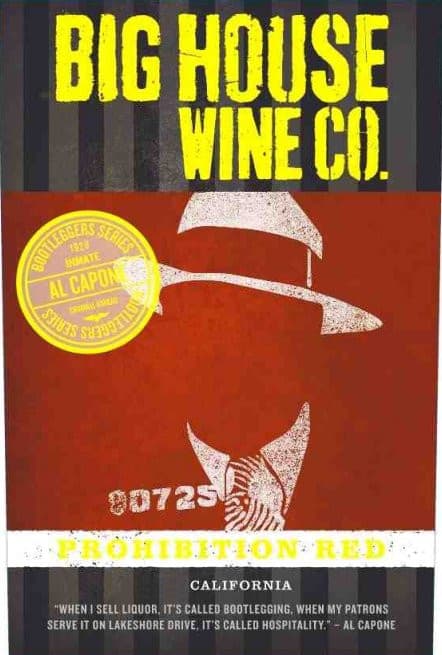Capone, who gained notoriety in the "Roaring Twenties" as the co-founder and boss of the Italian-American organized crime syndicate known as the Chicago Outfit, has been described by some as Prohibition's Robin Hood, as he donated some of the money from his illegal activities to charities. He also stood apart from other gangsters by being very present in the public eye, chatting with reporters and throwing big parties all while participating in illegal activities. But like many criminal figures from the past, the dastardly yet charismatic gangster divides opinion. Idolized by some, Capone was still responsible for "an empire of crime" in Chicago that was based on "gambling, prostitution, bootlegging, bribery, narcotics trafficking, robbery, and murder," according to the FBI's website.
Who was Al Capone?
Born in 1899 in Brooklyn, New York, the son of Neapolitan immigrants, Alphonse Gabriel Capone came into contact with organized crime at an early age. As a teenager, he became a member of the "Five Points Gang" — a criminal street gang of primarily Irish-American origins, based in the Five Points of Lower Manhattan — where he would extort protection money (fees that criminals take from people in exchange for agreeing not to hurt them or damage their property).
Capone, however, quickly learned that violence alone would not ensure the lasting success of a criminal enterprise.
In 1917, the gangster Frank Gallucio pulled a knife across Capone's face in a bar after he made a crude comment to Gallucio's sister. The nickname "Scarface" was born, and Capone later made the attacker his bodyguard.
Shortly afterward, Capone shot his first man, got into trouble with an Irish gang and beat a mobster half to death with his own hands. Knowing he could not be caught again, he left New York for Chicago.
In his Chicago heyday from 1925 to 1929, Capone was reputed to be the most notorious mobster in the United States.
Capone, however, didn't see himself as a criminal but as an entrepreneur — one who was also known for acts of generosity with the wealth he had garnered as the boss of organized crime in Chicago in the 1920s. The Capone-led consortium boasted revenue streams that ranged from the illegal sale of alcohol to prostitution.
St. Valentine's Day Massacre
The 1929 St. Valentine's Day Massacre is described by the FBI as the "culminating violence of the Chicago gang era, as seven members or associates of the 'Bugs' Moran mob were machine-gunned against a garage wall by rivals posing as police."
Even though Al Capone was at his Florida home at the time, he was widely assumed to have been responsible for ordering the massacre.
He was never convicted of the murders but ultimately went to prison merely for the crime of tax evasion, ending his stint as a crime boss at the age of 33.
He served most of his time at the notorious Alcatraz Federal Penitentiary off the coast of San Francisco, before being released in 1939, by which time his mental capabilities had significantly deteriorated.
Al Capone died in 1947 of cardiac arrest after a stroke at the age of 48.
A figure of fascination
The infamous gangster left his mark not only on the streets of 1920s Chicago but also on 20th-century Hollywood through multiple mafia movies inspired by his life and crimes. The image of a mobster adorned with a pinstriped suit and tilted fedora can be traced back to images of Capone. His accent and mannerisms have also inspired numerous gangster portrayals in comics, films, popular music and literature.
For example, already in 1931, for the film "Little Caesar," actor Edward G. Robinson spent time at an Al Capone trial to get a sense of his body language as inspiration for his role as a hoodlum who ascended the ranks of organized crime.
Capone appears in a segment of Mario Puzo's crime novel "The Godfather" (1969), which was turned into a celebrated film by Francis Ford Coppola in 1972. He was the inspiration for Armitage Trail's "Scarface" (1929), a novel that was also adapted into two movies over the years.
The Brian De Palma-directed masterpiece "The Untouchables" is another notable drama inspired by Capone's story. With Robert de Niro in the role of the gangster, the film is based on how Treasury agent Eliot Ness, played by Kevin Costner, brought down the notorious Chicago mobster.
More recently, the 2020 movie "Capone," starring Tom Hardy in the lead role, also chronicled the life of the man who ruled an empire of crime.
The fascination surrounding Al Capone continues 125 years after his birth.
His story embodies not only the American Dream — the immigrant son going from rags to riches — but also the ambivalence of American culture during Prohibition, an era characterized by both puritanical restraint and excessive consumption. And those contrasting historical features are still part of the country's culture to this day.
Thanks to Deutsche Welle.

















